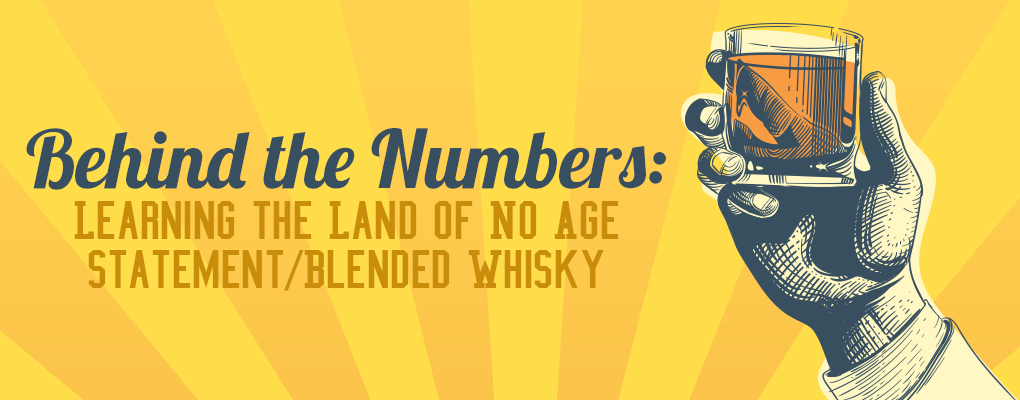Age Statements? Frankly, My Dear, I Don't Give a Dram
Aug. 9, 2017

Did you know that roughly nine out of 10 bottles of Scotch sold around the world are blends? That’s right – while many consumers associate Scotch with a specific age, most drams available today don’t have a birthday on the label. Blended Scotch, as well as No Age Statement (NAS) Scotch, can be a harder sell for some consumers who are married to drinking a number – preferably in the teens or higher.
 We checked in with Breakthru South Carolina Whiskey Ambassador Joe Ziegler to get his take on how you can navigate the world of blended/NAS Scotch, and how you can best sell them to your customers.
We checked in with Breakthru South Carolina Whiskey Ambassador Joe Ziegler to get his take on how you can navigate the world of blended/NAS Scotch, and how you can best sell them to your customers.
Tell us about the appeal of a NAS Scotch whisky, and how our customers should be talking about them with consumers.
Joe Ziegler: The process for creating a NAS whisky versus a whisky with an age statement is, for the most part, the same. The most important factor for both types is that individual casks are selected for their type of wood, flavor and aroma profiles, and what they will contribute to the finished product. The main difference is that for an age declared product, the youngest component casks must be at least the age of the declaration. For an NAS whisky, the youngest component must only comply with the legal minimum age requirement of 3 years old. Whisky makers will generally balance younger cask components with older components in NAS whiskies.
What’s unique about the production process of a NAS whisky?
NAS whiskies allow the distillery to innovate and expand their line while at the same time manage their aged stocks of whisky. This innovation is breaking with some of the traditional regional flavor/style boundaries and wood management practices, bringing to the market interesting line extensions and limited releases which often fall outside the distiller’s regular range of whiskies.
There are several different types of “blends.” Blended malts, blended grains, blended whisky. Can you tell us about the different kinds of blends and what makes each one unique?
Blended Scotch whisky is comprised of a base of single or multiple grain whiskies. Scotch grain whisky is usually made with a combination of malted and unmalted barley, wheat or corn, and contributes sweetness and depth to the finished blend. This grain whisky base then has single malt whisky from different distilleries blended in to complete the finished product. Many blended Scotch whiskies have 30 or more grain and malt whiskies in the blend.
Blended grain whisky is a marriage of at least two different grain whiskies, with no malt whisky added. These whiskies will generally be lighter and sweeter, but no less complex than malt whisky.
Blended malt whisky is a marriage of two or more single malts. There is no grain whisky in blended malt whisky. Blended malts were formerly called “vatted,” but this terminology was changed by the Scotch Whisky Association in 2009.
Why do you love Scotch?
My passion for Scotch whisky started when I was a brewer in a small brewpub. Being involved in the production of all malt beers made for a smooth transition to malt whiskies. Scotch whisky is truly a journey for your palate. Learning the different factors and variables that go in to the production of a particular whisky, how they translate into aroma, taste and finish, then to be able to identify them, is both interesting and challenging. I learn something new almost every day.